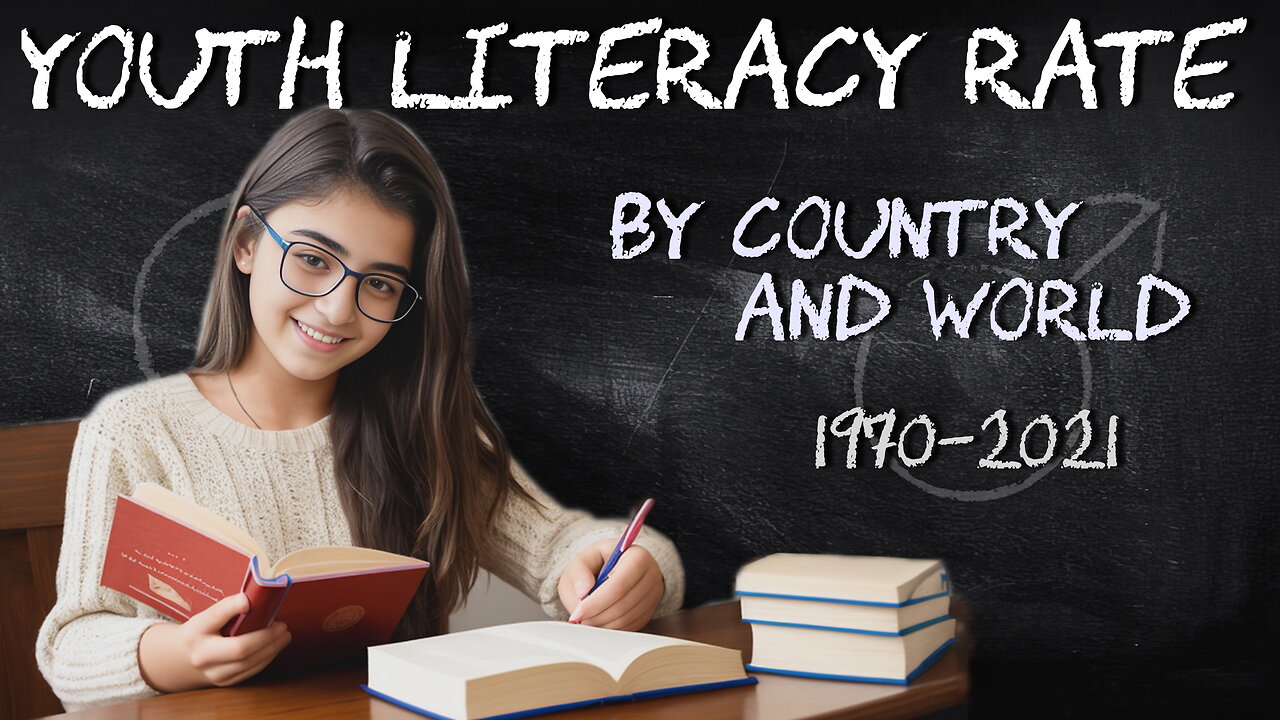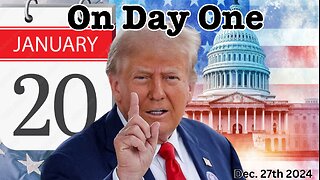Premium Only Content

Youth Literacy Rate by Country and World 1970-2021
Youth literacy rate refers to the percentage of young people within age 15 to 24 years who can read and write with understanding. This video shows the youth literacy rates by country and world by gender from 1970-2021.
Data for each country are shown when they first appear in the compilation, and are interpolated between later dates. In this video, countries with lowest rates are shown in the list. Data on literacy are compiled by the UNESCO Institute for Statistics based on national censuses and household surveys and, for countries without recent literacy data, using the Global Age-Specific Literacy Projection Model (GALP).
Youth literacy rates have undergone significant transformations since the 1970s, reflecting the progress and challenges in education worldwide. The ability to read and write with understanding is a fundamental human right and a critical factor in personal development, social mobility, and economic growth.
In the 1970s, youth literacy rates varied considerably across countries, with developing nations facing more significant challenges in providing accessible and quality education. Limited infrastructure, insufficient resources, and societal disparities hindered progress. International organizations like UNESCO began recognizing the importance of literacy as a development tool, laying the foundation for future initiatives.
During the 1980s, concerted efforts by governments and non-governmental organizations led to modest improvements in youth literacy rates. Increased awareness of the link between literacy and socio-economic development spurred initiatives that targeted underserved communities and marginalized groups.
The United Nations established the Millennium Development Goals (MDGs) in the 1990s, with one of the primary objectives being universal primary education, including youth literacy. This marked a turning point in the global commitment to improve literacy rates. Innovative programs, educational reforms, and international cooperation further accelerated progress.
The emergence of the digital age in the 2000s brought new opportunities for enhancing youth literacy rates. Technological advancements, including internet access and mobile devices, facilitated distance learning and e-learning initiatives. Online educational resources and digital libraries became more accessible, bridging the gap between rural and urban communities.
With the expiration of the MDGs in 2015, the United Nations adopted the 2030 Agenda for Sustainable Development, which includes the Sustainable Development Goals (SDGs). Goal 4 emphasizes quality education and aims to ensure inclusive and equitable access to education for all. Youth literacy remained a crucial component of this broader agenda.
By 2021, substantial progress had been made in improving global youth literacy rates. Many countries achieved near-universal primary education, significantly reducing the number of out-of-school children. However, challenges persisted, particularly in conflict-affected regions and countries facing economic hardships. Gender disparities in literacy rates also remained a concern.
Several factors played pivotal roles in shaping youth literacy rates over the decades:
Government Commitment: Strong political will and investment in education were crucial in driving positive outcomes.
Teacher Training: Well-trained and motivated teachers were essential in delivering quality education.
Gender Equality: Promoting gender equality in education was instrumental in narrowing the literacy gap between boys and girls.
Socio-economic Factors: Poverty, inequality, and access to resources significantly impacted youth literacy rates.
Technological Advancements: Embracing technology widened access to educational resources and learning opportunities.
Over the years, the world has witnessed remarkable progress in youth literacy rates, indicating a growing commitment to inclusive education. However, challenges persist, demanding continued efforts to ensure quality education for all young people. As we move forward, collaboration between governments, international organizations, and local communities will be pivotal in realizing the vision of a literate and empowered youth population in the years to come.
Music by Nico Staf - Large Smile Mood
Data visualization created with flourish.studio and AI
-
 34:38
34:38
Tudor Dixon
2 hours agoThe Changing Landscape Between Tech and Politics with Mike Benz | The Tudor Dixon Podcast
3.85K1 -
 2:23:58
2:23:58
Matt Kohrs
13 hours agoRumble's Stock Is EXPLODING!!! || The MK Show
60.9K6 -
 1:57:47
1:57:47
LFA TV
15 hours agoBOMBSHELL FINAL REPORT: BIDEN ADMIN SUPPRESSED WUHAN LAB LEAK | LIVE FROM AMERICA 12.27.24 11am EST
24.8K4 -
 43:07
43:07
Grant Stinchfield
2 hours ago $1.07 earnedWe Built it... China Controls it... Trump Will Take it Back!
7.16K6 -
 35:05
35:05
Rethinking the Dollar
2 hours agoTime to Pay the Piper! Debt Refinance Crisis Coming in 2025
11.8K1 -
 52:34
52:34
PMG
15 hours ago $2.87 earnedHannah Faulkner and Steve Friend | EXPOSE THE FBI CORRUPTION - KASH PATEL
12.1K8 -
 2:58:58
2:58:58
Wendy Bell Radio
8 hours agoOn Day One
80.4K73 -
 1:59:27
1:59:27
Jeff Ahern
4 hours ago $3.55 earnedFriday Freak out with Jeff Ahern (6am Pacific)
27K1 -
 1:56:07
1:56:07
Game On!
13 hours ago $1.54 earnedJosh Allen is the NFL MVP! It's not even close!
22K2 -
 13:05
13:05
Neil McCoy-Ward
4 hours agoWhy The Media Won't Tell You What Milei Did In Argentina...
22.8K1